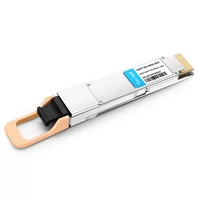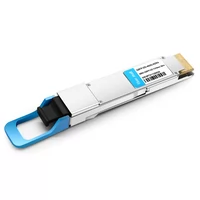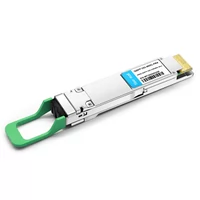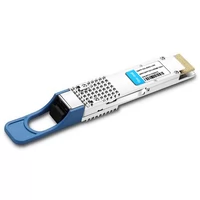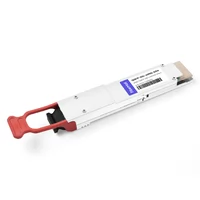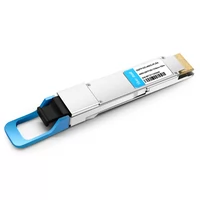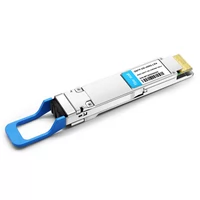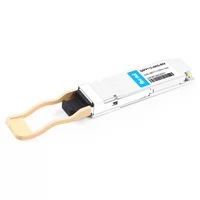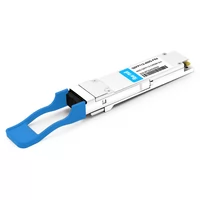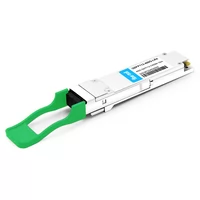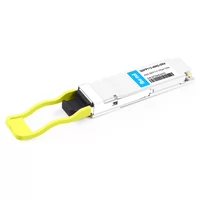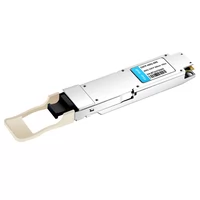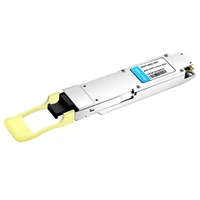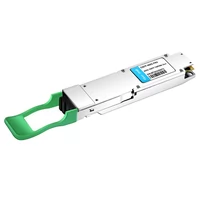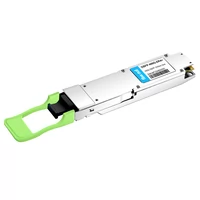Currently, telecommunications network faces challenges in network transformation and bandwidth enhancement. Therefore, improving the single-wave rate and transmission distance of optical transmission systems and increasing the bandwidth utilization of fiber optic communication systems have become a common pursuits of operators and equipment vendors to meet the growing demand for network traffic.
The industry is currently collaborating on three major dimensions to accelerate the evolution of backbone optical networks toward the 80*400G generation.
Table of Contents
ToggleRate Improvement
The backbone network evolves from 10G to 100G and then to 200G, with the distance basically unchanged and the capacity continuously multiplied. With the background of speed upgrades in router ports, the era of 400G ports has arrived, and telecommunications operators have all launched testing and verification. In 2023, the application of backbone 400G OTN is expected to occur.
Capacity Improvement
As the backbone optical network speeds up to 200G, it occupies a spectrum width of 75GHz. When it develops to 400G QPSK (Quadrature Phase Shift Keying), it will occupy a spectrum width of 150GHz. Compared with 200G, the spectral efficiency of 400G has not been improved, breaking the rule that the capacity increases by ten times while the frequency spectrum remains unchanged from 10G to 100G. Due to the influence of Shannon’s limit, opening up new paths is necessary to improve the overall fiber transmission capacity.
The most practical solution currently is the expansion of the C+L band frequency spectrum, including the C6T & L5T 11THz frequency spectrum expansion plan, which has completed network testing, and the C6T & L6T 12THz frequency spectrum expansion plan, which currently has laboratory testing capabilities and is about to complete network testing, and continuous system performance optimization is ongoing.
In the 80*800G system, further consideration will be given to expanding the frequency spectrum to the S+C+L+U bands. At the same time, as the backbone network speed increases, new fiber optics technologies such as multi-core fibers, few-mode fibers, and hollow-core fibers need to be used in conjunction to ensure long-haul transmission distance.
Efficiency Improvement
In the era of 400G/800G, new DSP technology is adopted, which supports multiple baud rates and modulation modes switching, and realizes the best adaptation of different capacities under different distances in a software-defined manner, maximizing the capacity-distance product and spectral efficiency.
Research Progress on Single-Wavelength 400G+ Technology
With regard to different application scenarios such as metropolitan and trunk networks, various technologies are employed in 400G transmission systems to achieve a balance between transmission performance, spectrum efficiency, and cost. Table 1 lists the characteristics and capabilities of major single-wavelength rate systems. There are distinct generational features between 100G and 100G+ technologies. In engineering applications, the next-generation short-distance modules and the previous-generation long-distance modules are usually coexistent within the industry chain, thus achieving industrial chain unification.
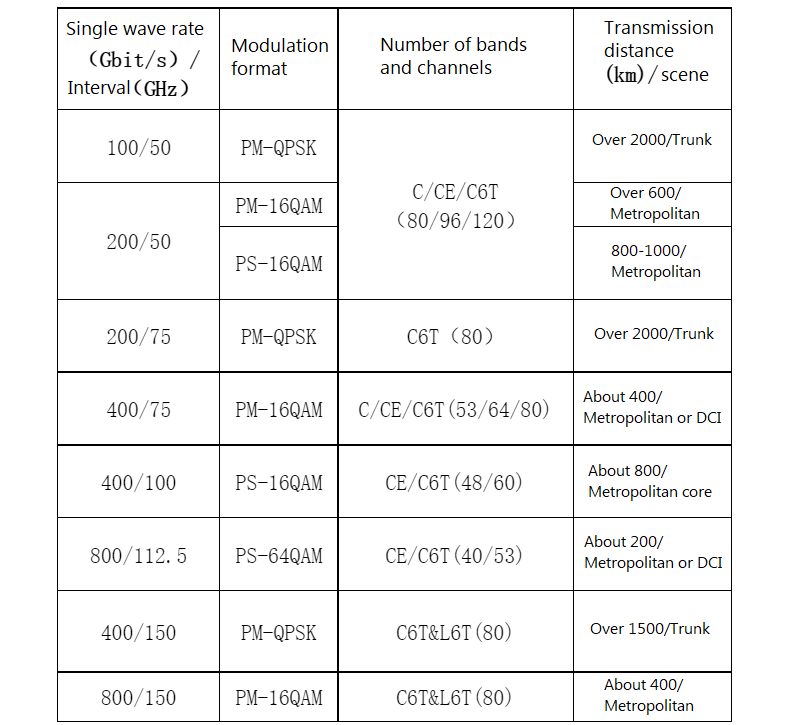
Table 1. Characteristics and capabilities of different single-wave rate systems
As shown in Figure 1, there are normalized representations of the 200G PM-16QAM and 100G PM-QPSK shared 32G baud rate industry chain, the 400G PM-16QAM and 200G PM-QPSK shared 64G baud rate industry chain, and the 400G PM-QPSK and future 800G PM-16QAM shared 128G baud rate industry chain.
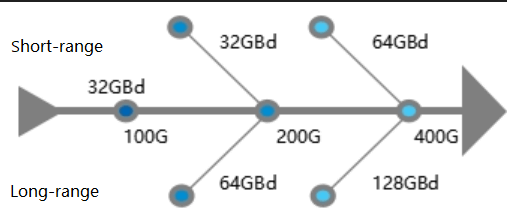
Figure 1. The normalized representations of short-range and long-range industry chain
Currently, the 200G QPSK is widely used, and the 400G 16QAM with a 64G baud rate can meet the needs of metropolitan transmission. The 400G transmission technology currently employs a probabilistic shaping (PS) 16QAM at a 96G baud rate, which will eventually evolve into a QPSK scheme at a 128G baud rate. Compared to the 400G PS 16QAM, the back-to-back OSNR performance of the 400G QPSK is approximately 1 dB better, while the input power is increased by more than 1 dB, making it suitable for various long-distance transmission scenarios and compatible with the future 800G 16QAM industry chain.
From the chip level, coherent oDSP technology has passed through several generations of evolution, and the differences between generations are mainly reflected in the highest single-wave rate, modulation code type, as well as size and power consumption. Currently, the 400G 16QAM oDSP chip uses a 7nm manufacturing process, consumes about 8W, and supports 64G baud rate. For the next generation of long-range 400G applications, the head oDSP manufacturer has released a single-wave 1.2T product roadmap and even module samples, supporting up to 140G baud rate, using a 5nm chip process.
From the aspect of the oDSP algorithm, constellation shaping, and high-performance FEC codec algorithm are more critical. Constellation shaping is divided into Geometric Shaping (GS) and Probabilistic Shaping (PS), as shown in Figure 2(a) and Figure 2(b). GS and PS provide better performance than conventional QAM by changing the location and probability of occurrence of constellation points to make them show special distribution.
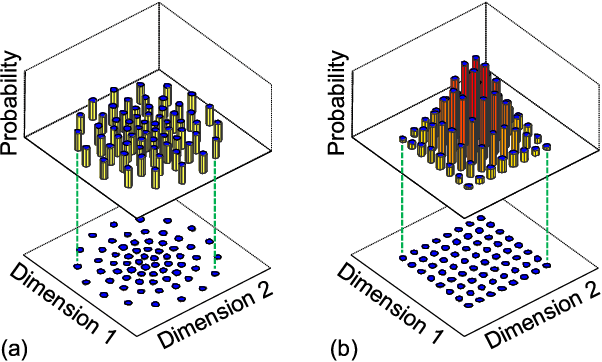
Figure 2. Schematic of constellation shaping
High-performance error correction coding (FEC) technology can obtain higher net coding gain by using a combination of cascaded coding and soft decision, multiple iterative decoding.
High-performance optoelectronic devices are the basis for achieving high-fidelity conversion of electrical signals to optical signals. In the face of long-range 400G optical transmission applications, the baud rate of the system is greater than 100Gbd, and the bandwidth of the optical device operating band needs to be more than 50GHz. At present, mainstream suppliers based on Silicon Photonics (SiP) or Indium Phosphide (InP) process platforms to carry out research on miniaturization, integration, and large bandwidth optical transceiver devices, launched part of the quasi-commercial samples.
Advanced device packaging technology is also an important means to optimize the bandwidth of optoelectronic chips. Currently, silicon optical chips can increase the 3dB bandwidth of a modulator from 30GHz to over 80GHz by integrating the Driver’s Peaking function and optimization of 2.5D/3D packaging process. This can bring more than 2dB of back-to-back OSNR tolerance improvement for 400G+ high-order modulated signals, and the increasing maturity of this technology further accelerates the commercialization of 128 Gbd long-range 400G systems.
In the core components of optical systems, Optical Amplifier (OA) and Wavelength Selective Switch (WSS) are the most critical. Currently, the commercial OA is mainly Erbium-Doped Fiber Amplifier (EDFA), which supports C-band 4THz, 4.8THz, and even 6THz bandwidth. The technical bottleneck of L-band 6THz amplification has been broken through, the performance of the sample is in line with the expectation, and the system-level performance is being verified and optimized. However, limited by the amplification efficiency of erbium-doped fiber at long wavelengths, the noise index of extended L-band EDFA may be more than 1 dB worse than that of extended C-band, and the module cost and size also increase accordingly.
At present, commercial WSS has covered C-band 6THz, a typical insertion loss of about 6dB, and the number of ports up to 32. Using the latest high-resolution liquid crystal on silicon (LCoS) technology, WSS spectrum slice resolution of 6.25GHz, several manufacturers have extended the working band to L-band 6THz.
In terms of standards progress, the International Telecommunication Union Study Group 15 (ITU-T SG15) has conducted research on the physical layer specifications for 200G and 400G interfaces, and has adopted PM-16QAM as the standard code type for 400G metro applications, promoting the standardization process of open forward error correction coding (oFEC). In addition, several multi-source protocol organizations (MSA) in the industry have also released technical standards for 100G+. For example:
- OpenROADM/OpenZR+ released 100~400G coherent optical module specification, supporting CFP2-DCO and QSFP-DD/OSFP packages, adding 100/200G QPSK, 300G 8QAM, and other modulation modes to the 400ZR frame structure, and using oFEC instead of cascaded FEC (cFEC) to support 450km-class 400G transmission.
- China Communications Standards Association (CCSA) has developed relevant standards: the development of optical transmission and module standards for 100G and below rates has been completed, 200G submission draft mainly selects 200G QPSK, 8QAM, 16QAM code types, 400G metro area standard essentially uses a single-wave 200G dual-carrier scheme, N *400G long-range enhanced optical wavelength division multiplexing (WDM) System technical requirements study and other standards topics for higher speed applications have been completed, clearly indicating that QPSK is the ideal solution to achieve single-wave 400Gb/s long-range/ultra-long-range.
Research Progress of Waveband Extension Technology
Band extension technology is inherited from DWDM to further extend the available transmission bandwidth beyond the traditional C-band, and enhance the single-fiber transmission capacity by increasing the number of channels for co-fiber transmission.
Based on the traditional C-band DWDM, in the last two years, Chinese operators and equipment vendors have led the expansion of Super C-band (C6T) to increase the bandwidth of C-band from 4THz/4.8THz to 6THz, in conjunction with the landing of 200G QPSK scheme with 80-wave 75GHz interval. In fact, the low-loss window of single-mode fiber includes not only C-band, but also O, E, S, L, and U bands. In recent years, a few operators and Internet vendors in the U.S. have also deployed C+L systems in DCI and submarine cable transmission, which can double the fiber capacity. With single-mode fiber approaching the 100Tbit/s Shannon limit in capacity, band extension technology has become a hot spot for academic and industry research. Currently, domestic operators and equipment vendors are actively promoting the upgrade of C6T to C6T&L6 in order to provide single-fiber 80-wave 400G QPSK long-haul transmission capability. The basic architecture of multi-band optical transmission system is shown in Figure 3.

Figure 3. The basic architecture of multi-band optical transmission system
The current development of the C+L-related industry chain is shown in Table 2. It can be seen that with the technical difficulties overcome, the development progress of the C+L extended-band optical component supply chain is in line with expectations, and the new generation of C6T+L6T 12THz broadband optical layer with single-wave 400G QPSK optical system is expected to usher in commercial deployment within 1 year.
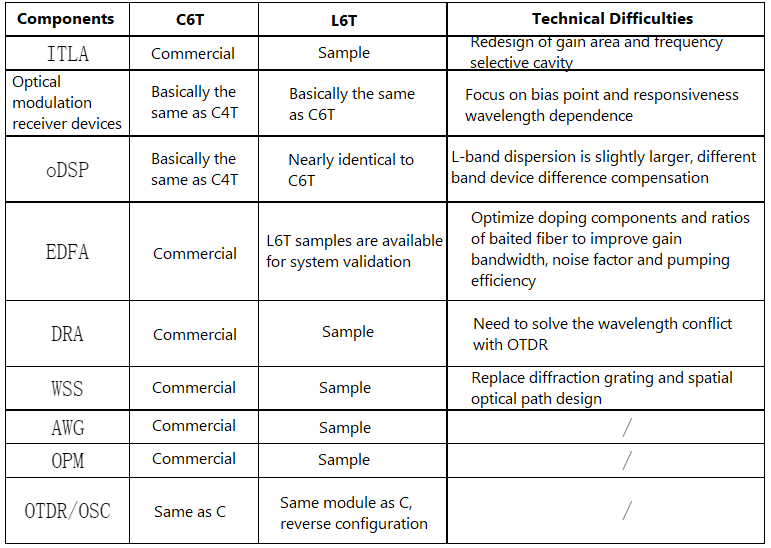
Table 2. C6T & L6T system key components industry chain progress
The SRS effect in optical fiber is significantly enhanced with the expansion of the bandwidth and the increase of input power and has a cumulative effect across sections. In C+L systems, not only precise optical power management strategies are required to effectively control gain and slope at the beginning, but also compensation for the power unevenness caused by SRS through filling wave configurations. Furthermore, it is necessary to maintain a full configuration state at all times to reduce the impact of dynamic business growth on existing businesses. Drawing on the experience of submarine cable systems, “true-false substitution” can be achieved by replacing business signals with filling waves when adding or deleting channels, which facilitates business activation and testing. Prior to power adjustment, due to the strong SRS power transfer in the C+L system, the single-wave power flatness at the end of the system deteriorates severely and cannot meet the requirements of the system’s applications. The C+L power pre-equalization strategy adjusts the gain and gains slope of the EDFA, resulting in significant improvements in power flatness, OSNR flatness, and minimum OSNR. The automatic power adjustment algorithm and filling wave configuration have been fully validated in field tests, laying a foundation for subsequent commercial deployments.
Progress in Single-Carrier 400G Systems
As early as 2020, FiberMall partnered with equipment vendors to conduct testing on single-carrier 400G 16QAM in the live network, achieving a transmission distance of up to 600km. In October 2021, FiberMall collaborated with Huawei, ZTE, and FiberHome to complete the world’s first ultra-wide-spectrum single-carrier 400G high-capacity optical transmission validation in the live network, achieving a transmission distance of over 1000km. In July 2022, FiberMall and ZTE simulated fiber length, loss, and maintenance margin in the laboratory based on network requirements and conducted 400G QPSK transmission verification, achieving a transmission distance of 3038km across 49 non-electrical relay segments. In January 2023, based on the laboratory test results, FiberMall carried out 400G QPSK live network testing, spanning four provinces including Zhejiang, Jiangxi, Hunan, and Guizhou, involving 45 optical amplifier segments, achieving a record-breaking transmission distance of 5616km for 400G QPSK non-electrical relay in the live network, and verifying for the first time the transmission performance of spectrum extension to C6T+L6T’s 12THz.
In order to lay out the computing power network, it is necessary to promote the research and development of key technologies for 400G, achieve comprehensive technical innovation in modulation, spectrum, and infrastructure, and continue to promote the evolution of new-generation optical communication technology on this basis, building a fully optical foundation for the computing power network and contributing to the development of the digital economy.
Related Products:
-
 QSFP-DD-400G-SR8 400G QSFP-DD SR8 PAM4 850nm 100m MTP/MPO OM3 FEC Optical Transceiver Module
$149.00
QSFP-DD-400G-SR8 400G QSFP-DD SR8 PAM4 850nm 100m MTP/MPO OM3 FEC Optical Transceiver Module
$149.00
-
 QSFP-DD-400G-DR4 400G QSFP-DD DR4 PAM4 1310nm 500m MTP/MPO SMF FEC Optical Transceiver Module
$400.00
QSFP-DD-400G-DR4 400G QSFP-DD DR4 PAM4 1310nm 500m MTP/MPO SMF FEC Optical Transceiver Module
$400.00
-
 QSFP-DD-400G-XDR4 400G QSFP-DD XDR4 PAM4 1310nm 2km MTP/MPO-12 SMF FEC Optical Transceiver Module
$580.00
QSFP-DD-400G-XDR4 400G QSFP-DD XDR4 PAM4 1310nm 2km MTP/MPO-12 SMF FEC Optical Transceiver Module
$580.00
-
 QSFP-DD-400G-FR4 400G QSFP-DD FR4 PAM4 CWDM4 2km LC SMF FEC Optical Transceiver Module
$500.00
QSFP-DD-400G-FR4 400G QSFP-DD FR4 PAM4 CWDM4 2km LC SMF FEC Optical Transceiver Module
$500.00
-
 QSFP-DD-400G-LR8 400G QSFP-DD LR8 PAM4 LWDM8 10km LC SMF FEC Optical Transceiver Module
$2500.00
QSFP-DD-400G-LR8 400G QSFP-DD LR8 PAM4 LWDM8 10km LC SMF FEC Optical Transceiver Module
$2500.00
-
 QSFP-DD-400G-ER4 400G QSFP-DD ER4 PAM4 LWDM4 40km LC SMF without FEC Optical Transceiver Module
$3500.00
QSFP-DD-400G-ER4 400G QSFP-DD ER4 PAM4 LWDM4 40km LC SMF without FEC Optical Transceiver Module
$3500.00
-
 QSFP-DD-400G-PLR4 400G QSFP-DD PLR4 PAM4 1310nm 10km MTP/MPO-12 SMF FEC Optical Transceiver Module
$1000.00
QSFP-DD-400G-PLR4 400G QSFP-DD PLR4 PAM4 1310nm 10km MTP/MPO-12 SMF FEC Optical Transceiver Module
$1000.00
-
 QSFP-DD-400G-LR4 400G QSFP-DD LR4 PAM4 CWDM4 10km LC SMF FEC Optical Transceiver Module
$600.00
QSFP-DD-400G-LR4 400G QSFP-DD LR4 PAM4 CWDM4 10km LC SMF FEC Optical Transceiver Module
$600.00
-
 QSFP112-400G-SR4 400G QSFP112 SR4 PAM4 850nm 100m MTP/MPO-12 OM3 FEC Optical Transceiver Module
$450.00
QSFP112-400G-SR4 400G QSFP112 SR4 PAM4 850nm 100m MTP/MPO-12 OM3 FEC Optical Transceiver Module
$450.00
-
 QSFP112-400G-FR4 400G QSFP112 FR4 PAM4 CWDM 2km Duplex LC SMF FEC Optical Transceiver Module
$750.00
QSFP112-400G-FR4 400G QSFP112 FR4 PAM4 CWDM 2km Duplex LC SMF FEC Optical Transceiver Module
$750.00
-
 QSFP112-400G-LR4 400G QSFP112 LR4 PAM4 CWDM 10km Duplex LC SMF FEC Optical Transceiver Module
$1500.00
QSFP112-400G-LR4 400G QSFP112 LR4 PAM4 CWDM 10km Duplex LC SMF FEC Optical Transceiver Module
$1500.00
-
 QSFP112-400G-DR4 400G QSFP112 DR4 PAM4 1310nm 500m MTP/MPO-12 with KP4 FEC Optical Transceiver Module
$650.00
QSFP112-400G-DR4 400G QSFP112 DR4 PAM4 1310nm 500m MTP/MPO-12 with KP4 FEC Optical Transceiver Module
$650.00
-
 OSFP-400G-SR8 400G SR8 OSFP PAM4 850nm MTP/MPO-16 100m OM3 MMF FEC Optical Transceiver Module
$225.00
OSFP-400G-SR8 400G SR8 OSFP PAM4 850nm MTP/MPO-16 100m OM3 MMF FEC Optical Transceiver Module
$225.00
-
 OSFP-400G-DR4 400G OSFP DR4 PAM4 1310nm MTP/MPO-12 500m SMF FEC Optical Transceiver Module
$800.00
OSFP-400G-DR4 400G OSFP DR4 PAM4 1310nm MTP/MPO-12 500m SMF FEC Optical Transceiver Module
$800.00
-
 OSFP-400G-FR4 400G FR4 OSFP PAM4 CWDM4 2km LC SMF FEC Optical Transceiver Module
$900.00
OSFP-400G-FR4 400G FR4 OSFP PAM4 CWDM4 2km LC SMF FEC Optical Transceiver Module
$900.00
-
 OSFP-400G-DR4+ 400G OSFP DR4+ 1310nm MPO-12 2km SMF Optical Transceiver Module
$850.00
OSFP-400G-DR4+ 400G OSFP DR4+ 1310nm MPO-12 2km SMF Optical Transceiver Module
$850.00

